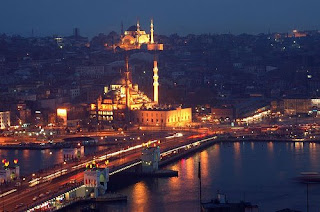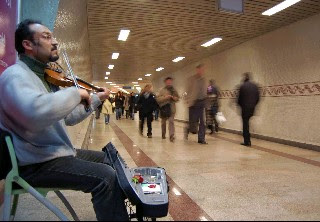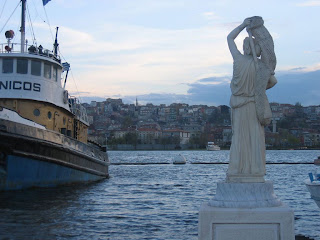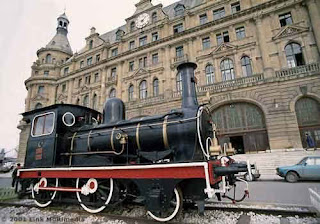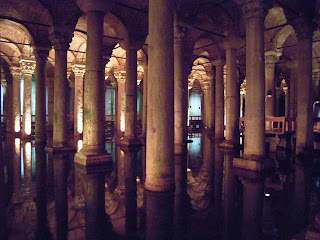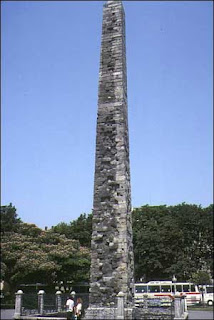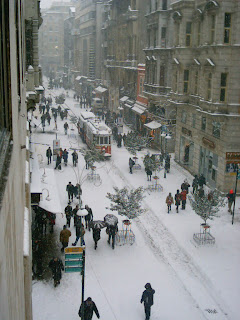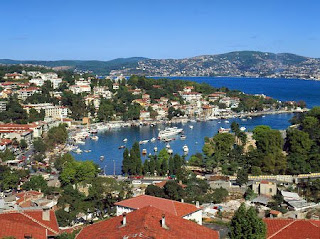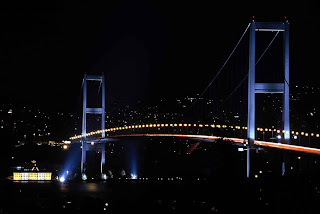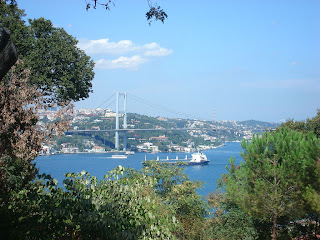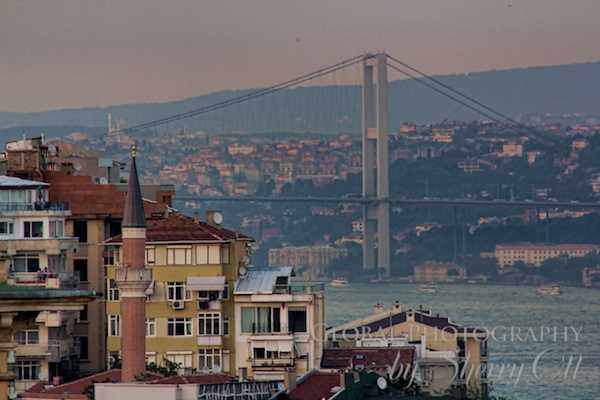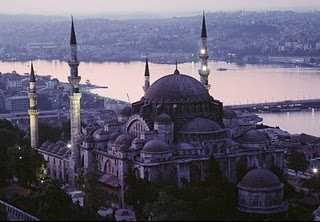 What do we know about Istanbul? First that this city is one of the basic shopping centres of Eurasia. Secondly – ancient capital of the Byzantian empire. In a current of many centuries Istanbul (the former Constantinople) was a stronghold of the Byzantian empire. This time has kept set of monuments of the architecture which have saved and to this day. The basic sights of Istanbul are concentrated in historical area “Sultan Ahmet”, in an old part of a city. The greatest interest such fundamental structures, as “cause Topkapi the Oriental carpet” – ancient residence ottoman sultans with a unique collection of treasures. Near to “Topkapi” the cathedral of Sacred Sofia towers. Throughout many centuries it served as a Christian temple, and already after a gain of Constantinople Ottoman Turks had been completed minarets and a temple has turned to a mosque. In the same area there is “a Blue Mosque” – a unique mosque in the world with six minarets. Huge proportions and the minarets which have shot up upwards admire and draw to itself tourists from all over the world. It is one of few mosques of the world who is opened for tourists. Between “the Blue Mosque” and a cathedral of Sacred Sofia the area of an ancient Hippodrome is stretched. Unfortunately, only two stone obelisks which entered into an architectural ensemble of the Hippodrome up to now have reached and it is necessary to guess its former greatness only. In one and a half kilometres from area “Sultan Ahmet” the biggest is possessed and one of the most ancient markets in the world – the Covered market (Kapaly Charshi). Undoubtedly, interest causes also a palace of the last sultans of “Dolmabahche” which is possessed on the bank of Bosporus and is well-known for the magnificence and internal furniture.
What do we know about Istanbul? First that this city is one of the basic shopping centres of Eurasia. Secondly – ancient capital of the Byzantian empire. In a current of many centuries Istanbul (the former Constantinople) was a stronghold of the Byzantian empire. This time has kept set of monuments of the architecture which have saved and to this day. The basic sights of Istanbul are concentrated in historical area “Sultan Ahmet”, in an old part of a city. The greatest interest such fundamental structures, as “cause Topkapi the Oriental carpet” – ancient residence ottoman sultans with a unique collection of treasures. Near to “Topkapi” the cathedral of Sacred Sofia towers. Throughout many centuries it served as a Christian temple, and already after a gain of Constantinople Ottoman Turks had been completed minarets and a temple has turned to a mosque. In the same area there is “a Blue Mosque” – a unique mosque in the world with six minarets. Huge proportions and the minarets which have shot up upwards admire and draw to itself tourists from all over the world. It is one of few mosques of the world who is opened for tourists. Between “the Blue Mosque” and a cathedral of Sacred Sofia the area of an ancient Hippodrome is stretched. Unfortunately, only two stone obelisks which entered into an architectural ensemble of the Hippodrome up to now have reached and it is necessary to guess its former greatness only. In one and a half kilometres from area “Sultan Ahmet” the biggest is possessed and one of the most ancient markets in the world – the Covered market (Kapaly Charshi). Undoubtedly, interest causes also a palace of the last sultans of “Dolmabahche” which is possessed on the bank of Bosporus and is well-known for the magnificence and internal furniture.The former capital of three successive empires, Roman, Byzantine and Ottoman, Istanbul today honors and preserves the legacy of its past while looking forward to a modern future.
It is Istanbul’s endless variety that fascinates its visitors. The museums, churches, palaces, grand mosques, bazaars and sights of natural beauty seem innumerable.
Reclining on the western shore of the Bosphorus at sunset contemplating the red evening light reflected in the windows of the opposite shore you may suddenly and profoundly understand why so many centuries ago settlers chose to build on this remarkable site. At such times you can see why Istanbul is truly one of the most glorious cities in the world.
The most beautiful historical works of Istanbul are at the historical peninsula inside the city walls between the Marmara Sea and the Golden Horn. This historical peninsula is like an open air museum full of architectural and artistic works bearing the traces of the Roman, Byzantine and Ottoman Empires. The hills of the city are enhanced by the more than 500 mosques. Among these mosques, the Sultanahmet Mosque with its six minarets, built by Sultan Ahmet I in the seventeenth century, is the symbol of Istanbul. It is also called “the Blue Mosque” because of the blue glazed tiles used in its interior decoration. The Suleymaniye Mosque, another mosque of the Ottoman Period, is the most beautiful and magnificent architectural work in Istanbul. It was constructed by Turkey’s famous architect Mimar Sinan, upon the order of Kanuni Sultan Suleyman (Suleyman the Magnificent) in the sixteenth century, when architectural beauty reached its peak. It is perched on the hills of the Golden Horn like a crown. The Rustem Pasha Mosque, which reveals the aesthetics of the Ottoman art of glazed tiles, is a small but beautiful mosque constructed by Mimar Sinan in the sixteenth century. The inside of the mosque is covered with the most beautiful examples of the famous Iznik glazed tiles. The Mihrimah Sultan Mosque, another mosque remaining from the sixteenth century, is the mosque with the most light in Istanbul. The mosque has a total of 161 stained glass windows on its four facades.
The Kapali Carsi (Covered Bazaar) which dates back to the fifteenth century and has 4,000 shops today, is one of the places frequently visited by tourists. Jewelry, antiques, carpets, silver and copper souvenirs, leather and suede clothes, wood-carvings and carvings with mother-of-pearl are sold at this bazaar. Furthermore, it is possible to find every type of spice at the Misir Carsisi (Egyptian Bazaar) constructed by Hatice Sultan in the seventeenth century. Istanbul is also a modern center for shopping. Along with the shopping malls, such as the Atakoy Galleria, the Akmerkez, the Capitol, the Carousel and the Carrefour; Istiklal, Rumeli and Bagdat Avenues are the most distinguished shopping areas of the city.
. Istanbul is also among the exceptional cultural centers in the world with various music and cinema festivals, theaters, operas, ballets, concerts, international symposia, conferences and competitions. “The International Culture and Art Festival”, that is organized every year in June and July, hosts world famous artists from all over the world.
The Istanbul Straits is a heaven on earth well worth seeing with its lovely shores decorated with very green tree groves, parks, palaces, waterside mansions, mosques and the Bosphorus and the Fatih Sultan Mehmet Bridges that remind one of a necklace. A steamship tour of the Bosphorus will display all these beauties. Besides, the Bosphorus and the islands are ideal for sailing. The city, which has also develop- ed yacht tourism, is an international yachting center. The Atakoy Marina, Kalamis and Fenerbahce Marinas provide many more facilities for yachtsmen, besides overnight berths
Kilyos and Sile near Istanbul are holiday towns known for their beaches. The Polonezkoy, a village where Polish immigrants came and settled in the nineteenth century, is an ideal vacation place surrounded by forests. The Belgrade Forests are known as the lungs of Istanbul. The Ataturk Arboretum, and aqueducts from the Ottoman Period are also worth seeing at the Belgrade Forests National Park. There are extensive areas suitable for playing golf at Silivri and Kemer.
